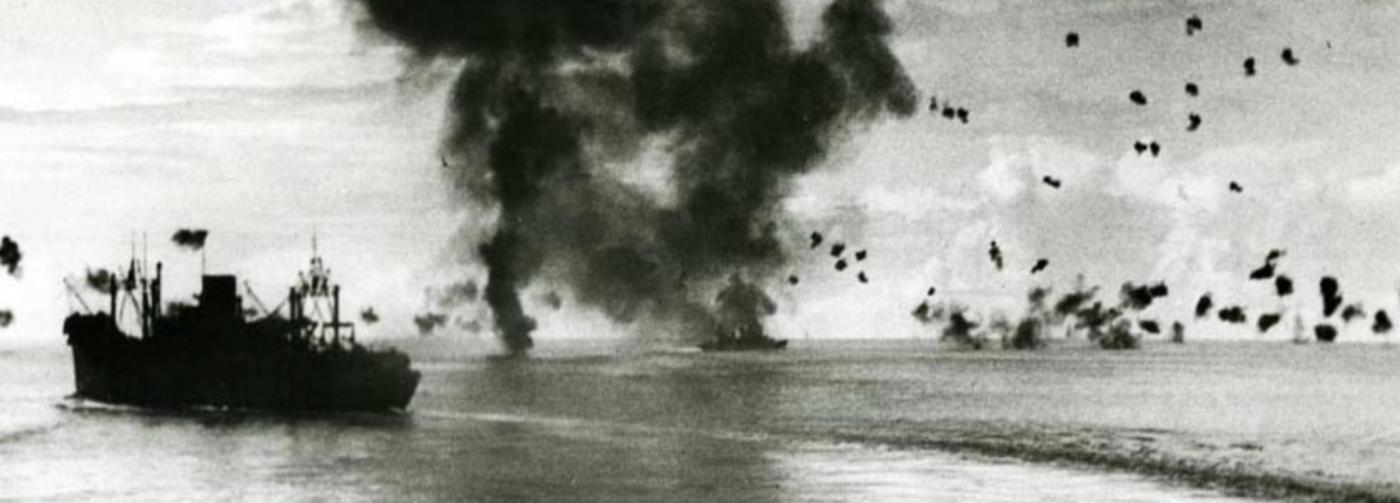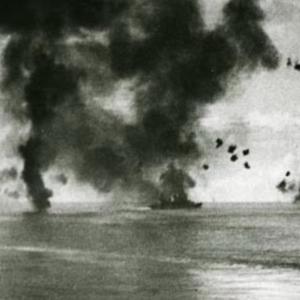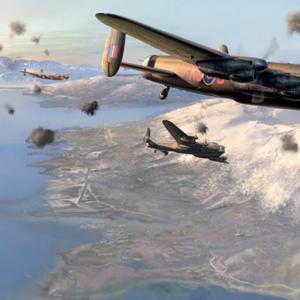
On this day in military history…
In the early hours of November 13, 1942, the waters off Guadalcanal in the Solomon Islands became the stage for one of the fiercest and most chaotic naval battles of the Second World War. This brutal clash, known as the Naval Battle of Guadalcanal, was the culmination of months of fighting between the United States and Imperial Japan over control of the island and its vital airfield at Henderson Field. Both sides knew that whoever held Guadalcanal would dominate the South Pacific and threaten enemy lines of communication and supply. The engagement that began shortly after midnight was not a single action but part of a larger struggle that unfolded over several days, marked by desperate courage, confusion, and heavy losses.
The Japanese plan, conceived by Admiral Isoroku Yamamoto, aimed to reinforce and resupply their ground troops on Guadalcanal while delivering a massive bombardment of Henderson Field to neutralize American air power. Vice Admiral Hiroaki Abe was placed in command of the bombardment force, which included two powerful battleships, Hiei and Kirishima, along with a screen of cruisers and destroyers. The Japanese intended to shell the airfield at dawn, paving the way for a large convoy of transports carrying reinforcements. They expected minimal resistance, believing American naval strength in the area had been largely neutralized after earlier battles.
The American response, however, was swift and determined. Admiral William F. Halsey, commanding U.S. forces in the South Pacific, realized that control of Guadalcanal was essential. He ordered Rear Admiral Daniel J. Callaghan and Rear Admiral Norman Scott to intercept the Japanese force with every available ship. The resulting American task force, though inferior in firepower, consisted of five cruisers—San Francisco, Portland, Helena, Juneau, and Atlanta—and eight destroyers. The U.S. fleet was supported indirectly by aircraft from Henderson Field, which could provide reconnaissance and daylight strikes once the night battle ended.
Shortly after midnight on November 13, in near-total darkness and without radar coordination between all ships, the two fleets blundered into each other at close range. What followed was a violent, confused brawl fought at distances so short that ships could see enemy gun flashes. The Japanese battleships’ big guns wreaked havoc, but American destroyers and cruisers charged into the fight with torpedoes and gunfire, scattering the Japanese formation. Admiral Callaghan and Admiral Scott were both killed early in the action, leaving the U.S. ships without clear leadership. The Japanese flagship Hiei was hit repeatedly, her steering crippled, and by morning she was abandoned and later sunk by American aircraft from Henderson Field and the carrier Enterprise.
Both sides suffered appalling losses. The Americans lost two light cruisers, Atlanta and Juneau, along with four destroyers, while several other ships were badly damaged. The Japanese lost the battleship Hiei, two destroyers, and suffered heavy damage to several cruisers. The following nights saw further battles as both sides sent reinforcements. On November 14, American aircraft struck the Japanese reinforcement convoy, sinking or damaging many transports and cargo ships. The next night, a second Japanese force under Vice Admiral Nobutake Kondō, including the battleship Kirishima, attempted to complete the mission. They were met by a new American task force under Rear Admiral Willis A. Lee, whose ships included the battleships Washington and South Dakota. In another savage night battle, Washington’s radar-directed gunfire overwhelmed Kirishima, setting her ablaze and forcing her crew to scuttle the ship.
By the end of the engagement, Japan had lost two battleships, several cruisers and destroyers, and most of its troop transports, which were either sunk or stranded. The Americans had lost two cruisers, seven destroyers, and over 1,700 men, including the five Sullivan brothers aboard the Juneau. Yet despite the heavy cost, the battle ended in a decisive American victory. Japanese forces failed to deliver their reinforcements, leaving their troops on Guadalcanal isolated and starving. Henderson Field remained operational, and U.S. air power continued to dominate the skies over the island.
Air support proved critical throughout the fighting. Aircraft from Henderson Field harried Japanese ships during daylight, while carrier-based planes from Enterprise and land-based bombers from nearby bases joined in sinking retreating vessels. The ability of American air forces to strike Japanese reinforcements in daylight turned the tide in favor of the U.S. and prevented Japan from regaining the initiative in the Solomon Islands.
The Naval Battle of Guadalcanal marked a turning point in the Pacific War. It was the first major engagement in which the United States Navy blunted and then reversed a Japanese offensive. The Japanese Navy never again attempted a large-scale operation to retake Guadalcanal, and their losses in ships and experienced crews were irreplaceable. For the Americans, the victory came at great cost but proved that their growing naval and air strength could match and defeat Japan’s once-dominant fleet. From that point onward, the balance of power in the Pacific began to shift steadily toward the Allies, leading eventually to Japan’s long retreat across the Pacific and the final victory three years later.










